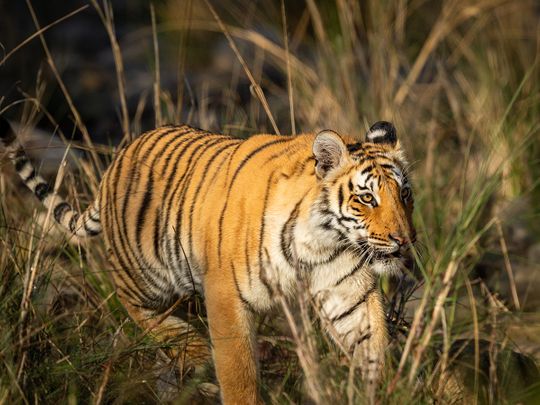
Patna: Forest department authorities have planned to create buffer areas around the habitat zones of tigers to check the recurrence of human-animal conflicts in Bihar.
The authorities have come up with the plan after finding tigers frequently coming out of their original habitat in Valmiki Tiger Reserve (VTR) in search of food, resulting in man-animal conflicts. The VTR, which is spread over 899 square kilometres of land near the Indo-Nepal border in the West Champaran district, is home to about 40 tigers.
As per the plan, the forest department will be arranging the favourite prey of the tigers in their habitat itself to prevent them from moving out of the jungle and reach human settlements. The supply of prey in the tigers’ own habitat, the officials said, will create a sort of buffer zone which will be beneficial for both wild animals and humans.
“Bison and spotted deer are the favourite prey of tigers. The forest teams will be catching the prey and leaving them in the tiger habitats. That will allow tigers to easily prey on them without making much effort for food,” VTR director Hemkant Roy told the media. Roy said the tiger would get food for a week after hunting a bison which weighs around 1,500kg.
According to forest officials, increased grassland at the tiger reserve has seen a significant rise in the number of bison. Similarly, spotted deer, another animal which tigers prey on, are currently available in abundance.
Of late, around a dozen villagers residing near the tiger reserve were killed in attacks by wild animals. Angry villagers severely wounded and killed a few big cats after being attacked. So the idea, officials said, will restrict the movement of tigers and provide them safety from human populations.
The VTR, which is also home to various animals such as sloth bear, leopard, Indian bison, hyena, wild dogs, several species of deer and antelopes, leopard cat, wild cat, fishing cat, wild boar, flying fox, serow, civet and flying squirrels has been ranked the fifth best tiger reserve in India.
Forest department officials said the increased grassland at the tiger reserve has seen a rise in the number of bison which resulted in growth of the tiger population.








